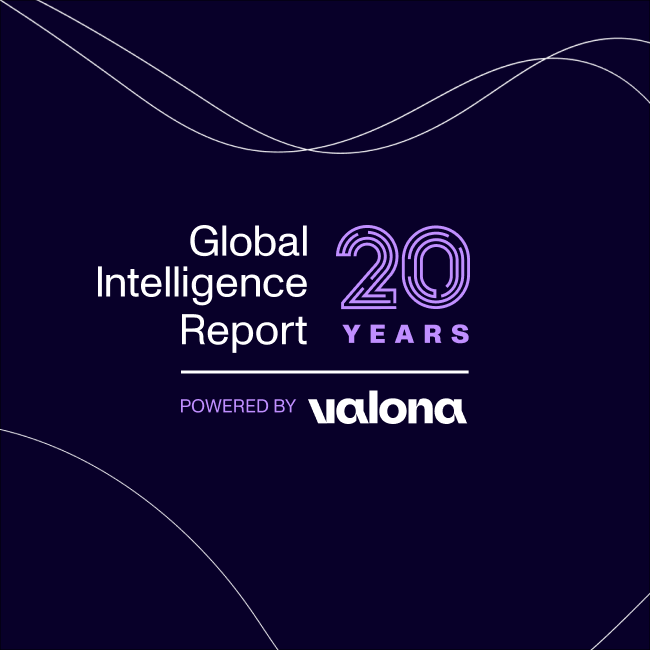
Sources of Market Intelligence: Why Most Teams Are Doing It Wrong
Making informed business decisions requires reliable market intelligence. But where can companies find accurate and timely information? Market intelligence comes from a variety of sources, both internal and external, each bringing unique value to the table. To make the right moves, you need to tap into the right data streams.
“We’re spending millions annually on sources, but I honestly can’t tell you which ones actually changed a decision. My team is drowning in subscriptions while I’m getting grilled by leadership about why we didn’t see [major market move] coming.”
We hear this constantly from intelligence leaders at Fortune 500 companies. Somewhere around when print went online, intelligence teams started thinking that collecting all the sources would make them safe. But after a quarter century helping companies improve their market intelligence functions, we’ve learned that the problem isn’t about having more sources—it’s about thinking strategically.
Most teams are building intelligence libraries when they should be building early warning systems. And there’s a big difference between the two.
Is your current source strategy failing you?
Can you relate to any of the following? You’ve got industry reports that tell you what happened six months ago. News alerts that flood your inbox every hour of the day. And a stack of subscriptions that seemed vitally important when you bought them but now just… exist.
Meanwhile, your CEO is asking why you didn’t predict the thing that “came out of nowhere” (but was actually telegraphed in hiring patterns, patent filings, and supplier discussions for months).
The issue isn’t that you need different sources. It’s that most intelligence teams approach sources like they’re building a library instead of building an early warning system.
Here’s how the sources actually break down:
Internal sources are the conversations, data, and observations happening inside your organization right now. Your sales team knows which customers are asking weird questions. Your procurement team knows which suppliers are acting cagey. Your customer service team knows which complaints are increasing. This stuff is gold, but most teams treat it as “anecdotal.”
External sources are everything published outside your organization—industry reports, news, regulatory filings, economic data. This is where most intelligence budgets go, but it’s also where you’re reading the same things as everyone else.
Specialized sources are the places where you might actually learn something your competitors don’t know. Different languages, regulatory proceedings, technical forums, patent databases. This is where you find the signals that matter.
The intelligence teams that actually help their executives make better decisions faster have figured out how to connect these three categories so insights emerge naturally.
Internal sources: The often-ignored intelligence gold mine
At this very minute, you’re sitting on intelligence that your competitors would kill for. (But most intelligence teams don’t systematically capture.)
Think about it this way—your sales team has conversations with customers that reveal buying pattern changes, competitor weaknesses, and emerging needs. Your operations team knows about supply chain hiccups before they hit the news. Your customer service team hears about product issues before they become public complaints.
But how much of this actually makes it to your intelligence reports? If you’re like most teams, maybe 10%?
Sales Intelligence: Beyond the CRM data
Your sales team doesn’t does more than just close deals; they’re conducting market research interviews every day. The problem is that most of this intelligence dies in the CRM or gets mentioned once in a team meeting, then forgotten.
What your sales team actually knows:
- Which competitors are suddenly more (or less) aggressive on pricing
- What features customers are requesting that you don’t have
- Which markets are showing unexpected budget constraints
- How buying processes are changing in response to economic conditions
The pattern that matters: When multiple salespeople mention the same objection, customer request, or competitive behavior, that’s not sales feedback—that’s market intelligence. The teams that capture this systematically can spot market shifts 3-6 months early.
A real/hypothetical example: Let’s say you’re a software company whose sales team has suddenly started getting questions about API security from customers — who’d never cared until very recently. Instead of just noting it as a feature request, your intelligence team connects it to new regulatory discussions in the EU. As a result, your product team develops compliant features six months before the regulations are finalized, winning deals from competitors who (unlike you) — didn’t listen to their customers as carefully as they should have.
Customer Service: Your early warning system
Customer service interactions predict market changes better than most industry reports. The challenge is that most companies treat support tickets as operational data instead of strategic intelligence.
What customer service really tells you:
- Which product issues are increasing before they become public problems
- How customer usage patterns are changing
- What competitors are promising that they can’t deliver
- Where customers are struggling with implementation or adoption
The intelligence in the data: When support tickets cluster around specific themes, that’s market intelligence. When call volume changes for specific customer segments, that’s market intelligence. When customers start asking about capabilities they never cared about before — you guessed it — market intelligence again.
Operations: The signals everyone misses
Your operations team knows about supply chain disruptions before they hit the news. They see demand patterns in real-time. They know which suppliers are having problems, which regions are showing unusual activity, and which products are moving faster or slower than expected.
Hidden market signals in operations:
- Supplier behavior changes that indicate broader market shifts
- Production adjustments that reflect demand pattern changes
- Inventory turnover variations that predict customer behavior
- Cost fluctuations that signal economic or regulatory changes
Another real/hypothetical: Let’s say you’re a Fortune 500 manufacturing company operating in 115 different markets worldwide. Your procurement team just flagged that their Chinese suppliers are suddenly offering longer payment terms. Instead of just seeing it as a good deal, your intelligence team connects this “lucky break” to broader economic signals and realizes a major supply chain disruption is on the horizon. Lucky for you, there’s still enough time to secure alternative suppliers. Crisis averted, all thanks to you.
External sources: Beyond the obvious industry reports
Let’s talk about the elephant in the room: most external sources tell you what already happened. Industry reports summarize last quarter’s data. News articles report on announced deals. Even “market research” often reflects consumer behavior from months ago.
But here’s the thing—external sources become useful when you know how to read them for forward-looking signals instead of backward-looking summaries.
Industry Reports: Reading between the lines
Industry reports get a bad rap for being “too late to be useful,” but that’s usually because people are reading them wrong. The value isn’t in the executive summary—it’s in the methodology, the footnotes, and the data they didn’t emphasize.
What to actually look for:
- Methodology sections that reveal which companies participated (and which didn’t)
- Geographic breakdowns that show regional variations
- Data footnotes that explain outliers or anomalies
- Survey timing that tells you when the data was actually collected
The intelligence approach: Instead of asking “What does this report tell us?” ask “What does this report tell us about the companies that participated? What does it tell us about the markets they didn’t cover well? What questions are they asking that we should be asking too?”
News and Media: The signal vs. noise problem
News monitoring is where the majority of intelligence teams waste the most time. You set up alerts for your company name, your competitors, and some industry keywords, — then lose hours each week sifting through irrelevant information.
The smarter approach:
- Monitor adjacent industries that affect your market
- Track regulatory discussions, not just regulatory announcements
- Follow economic indicators that historically predict your customer behavior
- Watch for acquisition patterns that suggest strategic shifts
How (and why) this works: Let’s say you’re a chemical company. You monitor agricultural news, not because you’re in agriculture, but because agricultural demand changes predict your customer’s behavior six months out. When fertilizer shortages hit, you’ve already spotted them long before your competitors.
Competitive Intelligence: What they’re actually doing vs. what they’re saying
Most competitive intelligence focuses on what competitors are announcing—press releases, marketing materials, executive quotes. But the real intelligence is in the things they can’t control.
Sources that competitors can’t spin:
- Hiring patterns that reveal strategic priorities
- Patent filings that indicate R&D direction
- Supplier relationships that suggest new capabilities
- Real estate changes that signal expansion or contraction
The pattern recognition: When you see a competitor hiring data scientists, filing patents in a new technology area, and partnering with different suppliers, that’s not three separate pieces of information—that’s one strategic shift happening in real-time.
Specialized sources: Where you actually get ahead
This is where most intelligence teams either get really good or stay perpetually behind their competitors. Specialized sources require more work to access and analyze, but they’re also where you find information that actually changes decisions.
Cross-Language Intelligence
Here’s a simple question: if you’re competing in global markets, why are you only reading intelligence in English?
Critical market signals appear in local languages months before they get translated or picked up by English-language media. Regulatory changes get discussed in local forums. Innovation signals appear in technical publications. Market shifts get debated in regional business media.
What you’re missing with English-only intelligence:
- Regulatory discussions that won’t reach international media for months
- Innovation signals from technical publications in native languages
- Local market reactions to global events
- Regional competitive moves that haven’t been announced internationally
The practical impact: A Nordic manufacturing client of ours completely changed how they generate leads by monitoring Portuguese-language sources in Brazil. In the first three months, they identified over 500 qualified leads from plant expansions, investments, and partnerships that were being discussed in local publications months before they reached English-language media. Their competitors were still relying on English-only sources and missing entire market opportunities.
Regulatory Intelligence: Beyond compliance updates
Most companies treat regulatory intelligence like compliance monitoring—they want to know about changes after they’re finalized so they can respond. But regulatory intelligence becomes strategic when you monitor the process, not just the outcome.
What to monitor for strategic advantage:
- Policy proposals that will reshape industry requirements
- Regulatory discussions across multiple jurisdictions
- Economic indicators that predict regulatory responses
- Trade policy changes that affect supply chains
Why this matters: Regulations don’t appear overnight. They go through months or years of discussion, proposal, comment periods, and revision. Companies that monitor this process can prepare for changes while competitors are still processing the final announcement.
Economic Intelligence: Leading indicators that go unnoticed
Economic intelligence becomes useful when you track indicators that predict your customers’ behavior, not just describe general economic conditions.
Customer behavior prediction indicators:
- Credit conditions that affect purchasing decisions
- Currency fluctuations that impact buying patterns
- Interest rate changes that influence capital investment
- Commodity price movements that reshape cost structures
The connection most teams miss: Your customers’ behavior changes before your industry data reflects it. If you’re selling to manufacturers, track the indicators that predict manufacturing investment. If you’re selling to retailers, track the indicators that predict consumer spending.
Technical Intelligence: Patents, papers, and prototypes
Technical intelligence reveals what’s coming 12-18 months before it hits the market. Patent filings, research papers, and prototype discussions all signal future competitive moves.
What technical intelligence actually tells you:
- Which technologies competitors are sinking serious money into
- Where academic research is heading that might affect your industry
- Which startups are developing capabilities that could disrupt your market
- How quickly new technologies are moving from lab to market
The strategic application: When you see multiple patents filed in the same technology area, research papers exploring similar approaches, and startup funding in related fields, that’s not just innovation—that’s a market shift forming in real-time.
How to fix your source strategy without starting over
Most intelligence teams know their current approach isn’t working, but they don’t know how to fix it without blowing up their entire operation. Here’s the practical approach that actually works.
Start with decisions, not sources
Before you add, remove, or change any sources, ask yourself: “What decisions is my intelligence supposed to inform?” Most teams can’t answer this question clearly, which is why they end up with a random collection of subscriptions instead of a strategic intelligence system.
The decision mapping exercise:
- List the 5-10 most important business decisions your company makes annually
- For each decision, identify what intelligence would change the outcome
- Map your current sources to these decisions
- Identify where you have gaps and where you have redundancy
What you’ll probably find: You’re spending 80% of your budget on sources that inform maybe 20% of your important decisions. And the decisions that matter most? You’re probably getting intelligence for those from three different sources that are all saying the same thing.
The 80/20 source audit
Most intelligence teams discover they get 80% of their actionable insights from about 20% of their sources. The challenge is figuring out which 20%.
Questions that reveal source value:
- Which sources have influenced a business decision in the past year?
- Which sources do you check first when something important happens?
- Which sources would you pay for with your own money if you had to?
- Which sources have given you information that your competitors didn’t have?
The candid truth: If you can’t connect a source to a specific business decision, you’re probably not getting value from it. And if you’re getting the same information from multiple sources, you’re definitely overspending.
Don’t just collect sources, connect them
The magic happens when you connect different sources to see patterns that none of them reveal individually. Your sales team notices pricing pressure. Your regulatory monitoring picks up policy discussions. Your economic intelligence shows credit tightening. Separately, these are just data points. Together, they’re a picture of market conditions that lets you adjust strategy before competitors even know what’s happening.
How to connect sources systematically:
- Create regular cross-source analysis sessions
- Look for patterns that appear in multiple source categories
- Track how internal signals correlate with external indicators
- Document when source combinations predicted important changes
Focus on what you can’t google
If your competitor can find the same information by spending 30 minutes on Google, it’s not intelligence—it’s research. The sources that actually matter are the ones that give you information your competitors can’t easily access.
Sources that provide genuine advantage:
- Internal data that only you have access to
- Cross-language sources that competitors don’t monitor
- Regulatory proceedings that aren’t widely covered
- Technical discussions in specialized forums
- Economic indicators that predict your specific customer behavior
Test and Measure
Most intelligence teams never measure whether their sources are actually helping them make better decisions. They measure volume (how many insights we delivered) or engagement (how many people read our reports) instead of impact (how many decisions were improved).
Metrics that actually matter:
- How often do your sources help predict important changes?
- How many business decisions were influenced by your intelligence?
- How much earlier do you spot important changes compared to competitors?
- How often do executives ask for your input on strategic decisions?
The bottom line for your bottom line
Here’s what successful intelligence teams have figured out: sources are tools, not trophies. Having more sources doesn’t make you better at intelligence any more than having more hammers makes you better at building houses.
The teams that actually help their organizations make better decisions faster focus on three things:
- They’re clear about what decisions they’re trying to inform and choose sources accordingly
- They connect different types of sources to see patterns that individual sources can’t reveal
- They measure success by decision impact, not data volume
If you’re spending more time managing sources than analyzing insights, your strategy needs work. If you can’t trace specific business decisions back to your intelligence, your sources aren’t working. And if you’re always explaining why you didn’t see something coming, you’re probably monitoring the wrong things.
The goal isn’t to have the most sources—it’s to have the right sources, connected in ways that help you spot what matters before your competitors do.
Ready to elevate your source strategy? Valona’s global intelligence platform combines signals from 200,000+ sources across 115+ languages with strategic frameworks that help Fortune 500 companies move first in changing markets.
Frequently asked questions
How do I know if my market intelligence sources are working?
Simple test: can you trace specific business decisions back to your intelligence sources? If leadership makes a strategic pivot, enters a new market, or changes pricing strategy, you should be able to point to the intelligence that informed that decision. If you can’t, you’re collecting data, not intelligence. Also, if you’re always explaining why you didn’t see something coming, your sources aren’t giving you the early signals you need.
What’s the difference between internal and external market intelligence sources?
Internal sources are the conversations, data, and observations happening inside your organization right now—sales calls, customer service interactions, operational data. These are insights your competitors can’t access. External sources are everything published outside your organization—industry reports, news, regulatory filings. The magic happens when you connect these two categories to spot patterns that neither reveals alone.
How many market intelligence sources do I actually need?
There’s no magic number, but most intelligence teams discover they get 80% of their actionable insights from about 20% of their sources. Instead of asking “how many sources?” ask “which decisions am I trying to inform?” Then work backwards to identify the minimum number of sources that would give you the intelligence you need for those decisions. Quality beats quantity every time.
Why are my competitors always ahead of market changes?
Usually because they’re monitoring different sources than you are. If you’re all reading the same industry reports and English-language news, you’re all getting the same information at the same time. The companies that stay ahead are typically monitoring sources in multiple languages, tracking regulatory discussions (not just final regulations), and systematically capturing intelligence from their internal teams. They’re not smarter—they’re just looking in places you’re not.
Should I be monitoring sources in languages other than English?
If you’re competing in global markets, absolutely. Critical market signals often appear in local languages months before they reach English-language media. Regulatory discussions happen in native languages. Innovation signals appear in local technical publications. Market reactions to global events get discussed in regional media first. The Nordic manufacturer we mentioned generated 500+ qualified leads in three months just by monitoring Portuguese-language sources in Brazil that their competitors weren’t watching.




